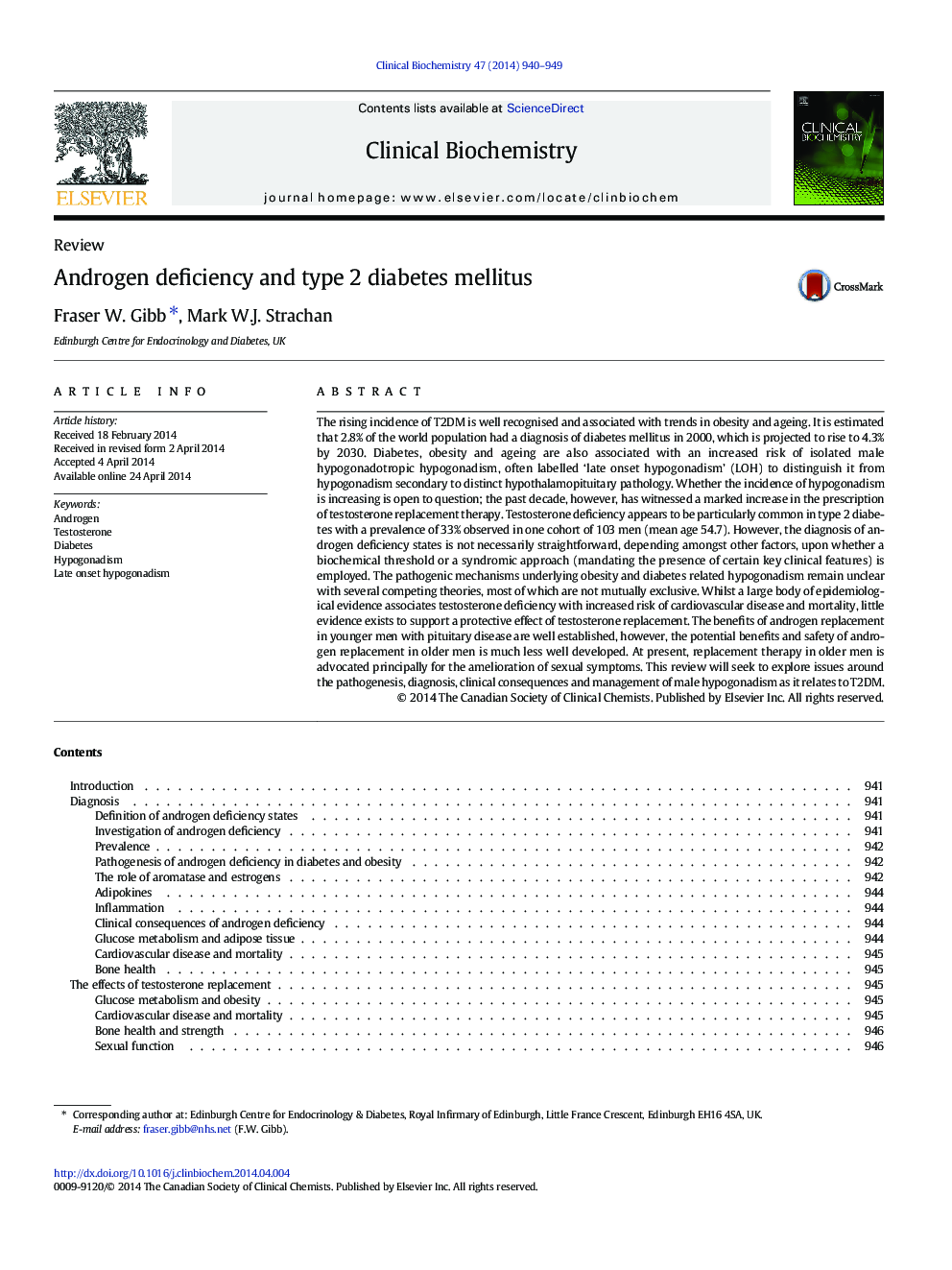| کد مقاله | کد نشریه | سال انتشار | مقاله انگلیسی | نسخه تمام متن |
|---|---|---|---|---|
| 1968637 | 1538873 | 2014 | 10 صفحه PDF | دانلود رایگان |
• Approximately 25% of men with T2DM have subnormal circulating testosterone.
• Adipose tissue is implicated through increased aromatization and cytokines.
• Testosterone deficiency is associated with insulin resistance and CVD.
• Testosterone replacement is not without risk and a stronger evidence base is required.
The rising incidence of T2DM is well recognised and associated with trends in obesity and ageing. It is estimated that 2.8% of the world population had a diagnosis of diabetes mellitus in 2000, which is projected to rise to 4.3% by 2030. Diabetes, obesity and ageing are also associated with an increased risk of isolated male hypogonadotropic hypogonadism, often labelled ‘late onset hypogonadism’ (LOH) to distinguish it from hypogonadism secondary to distinct hypothalamopituitary pathology. Whether the incidence of hypogonadism is increasing is open to question; the past decade, however, has witnessed a marked increase in the prescription of testosterone replacement therapy. Testosterone deficiency appears to be particularly common in type 2 diabetes with a prevalence of 33% observed in one cohort of 103 men (mean age 54.7). However, the diagnosis of androgen deficiency states is not necessarily straightforward, depending amongst other factors, upon whether a biochemical threshold or a syndromic approach (mandating the presence of certain key clinical features) is employed. The pathogenic mechanisms underlying obesity and diabetes related hypogonadism remain unclear with several competing theories, most of which are not mutually exclusive. Whilst a large body of epidemiological evidence associates testosterone deficiency with increased risk of cardiovascular disease and mortality, little evidence exists to support a protective effect of testosterone replacement. The benefits of androgen replacement in younger men with pituitary disease are well established, however, the potential benefits and safety of androgen replacement in older men is much less well developed. At present, replacement therapy in older men is advocated principally for the amelioration of sexual symptoms. This review will seek to explore issues around the pathogenesis, diagnosis, clinical consequences and management of male hypogonadism as it relates to T2DM.
Journal: Clinical Biochemistry - Volume 47, Issues 10–11, July 2014, Pages 940–949
